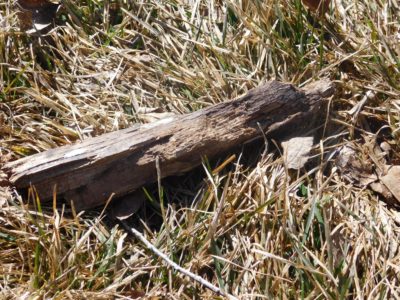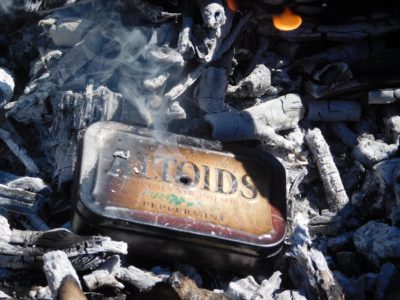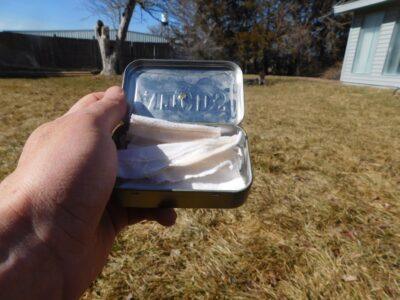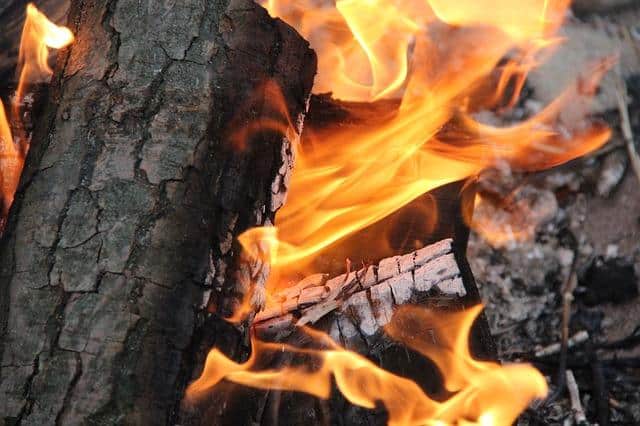Fire has rightly earned its reputation as one of the most important aspects of survival. Anyone with experience in bushcraft and primitive living will tell you fire is not only essential for the direct benefits it offers, but also for other skills: making primitive glues, tanning and arrow making are just a few examples. This is beside the fact that meat cooked over a fire is much more palatable and safer to eat as well. Fire is simply a necessary component of any survival situation.
In reality, we live in a world where fire starting is ridiculously easy. For a few bucks you can buy enough Bic lighters to last you for years. Even with that being the case, though, some people want the ability to start a flame in other ways – say, when they don’t have a lighter. One of the simplest ways that was extremely popular prior to the invention of matches is flint and steel.
Flint and steel has been used for fire since before Roman times. It is the fire technology with which our frontier was opened, and men like Daniel Boone and other mountain men used it. The process is incredibly simple and effective. All you really need is a piece of steel and something to strike it against that throws a spark. Flint works superbly for this purpose and is the most popular material for the job. There is, however, a secret ingredient our ancestors used that plays the biggest role in this process: char.
Char refers to any natural material that has been “charred,” a process we will dive into in a moment. Charring certain natural materials changes their chemical composition. I’m no scientist, but the technical term for this change is called “pyrolysis.” Regardless of the name, most bushcrafters are only concerned with one thing: It works. Once charred, certain natural material will catch a spark from the flint and steel and create an ember. From this ember, a person who understands the basic elements of fire can create a blaze in a few short minutes. It is almost spellbinding the first time you see it in action.
Discover The Secrets Of The Word’s Top Survivalists!
To be sure, not every natural material can easily be turned into char. Here are three popular natural materials for making char.
1. Rotten wood
 People who were removed from civilization for an extended period of time had to use materials they could find. One of the best char materials, and most abundant ones, is rotten wood. Rotten wood is typically scattered all about, so one huge benefit is not having to pack it with you as you go. When selecting wood, try and select small pieces that are punky, or in other words, porous and light. It is best to look for suitable material near creek beds or in low-lying locations. These locations have more moisture, which helps to rot the wood faster. Rotten wood would have been the most popular choice of char material for experienced woodsmen and frontiersmen.
People who were removed from civilization for an extended period of time had to use materials they could find. One of the best char materials, and most abundant ones, is rotten wood. Rotten wood is typically scattered all about, so one huge benefit is not having to pack it with you as you go. When selecting wood, try and select small pieces that are punky, or in other words, porous and light. It is best to look for suitable material near creek beds or in low-lying locations. These locations have more moisture, which helps to rot the wood faster. Rotten wood would have been the most popular choice of char material for experienced woodsmen and frontiersmen.
2. Cattail
A third popular material for making char is cattail. Cattails are abundant in many parts of the country and make suitable char material. When you are gathering cattail for char, you want to be sure and get full heads that have not begun to release their seeds. Before you make the char, you will need to pull the seeds from the plant and get only the cattail “fluff.” Cattail fluff is an easy-and-abundant way to make char, but keeping the fluff together can be a challenge. I would not recommend cattail fluff for a first-time firemaker, but after practice it can be used easily.
3. 100 percent cotton
Most people are introduced into the world of flint and steel through what’s called “char cloth.” Anything 100 percent cotton works just fine. Beware of any shirt blended with synthetics, as these will not catch a spark like natural cotton will. While cotton is popular today, and historically was used as well, it wasn’t the most popular method for people removed from civilization; they would soon run out of it after significant time in the wild. In our modern world, we can get cotton cheaply and easily enough that it is the best option for beginners.
 For anyone interested in making char cloth, the process is fittingly simple as well. You can accomplish the task in 10 simple steps:
For anyone interested in making char cloth, the process is fittingly simple as well. You can accomplish the task in 10 simple steps:
- Find a fire-resistant container of some kind that can be closed. An Altoids tin has become the iconic flint-and-steel container of our day.
- Punch a small hole into your container or tin.
- Get a fire going and get a good bed of coals burning.
- While your fire burns, break your char material down to a size that can fit in the tin.
- Fill the tin with the desired amount of material. For efficiency sake, it is best to fill the tin fairly full.
- Close the lid and place the tin on the coals. At this point it is worth noting that you don’t actually want the material to catch fire. It needs to bake more than anything, and coals serve this purpose the best.
 Soon, the tin will begin to smoke. This means the charring process has started and things are moving along just fine.
Soon, the tin will begin to smoke. This means the charring process has started and things are moving along just fine.- Once the tin has quit smoking, that means your char is made and you should remove the container.
- Allow the container to cool for a few minutes before opening the lid.
- You should now have char material made that will catch a spark for your next fire-making adventure.
As you can see, making char is an extremely simple process, but nonetheless invaluable to know for long-term self-reliance escapades. Learn the ins and outs of the flint-and-steel fire-starting method and you are not only learning a skill to help you develop more self-reliance, but you also are carrying a torch from the past.
What advice would you add? How do you make char? Share your tips in the section below:
Learn How To ‘Live Off The Land’ With Just Your Gun. Read More Here.
 Off The Grid News Better Ideas For Off The Grid Living
Off The Grid News Better Ideas For Off The Grid Living





